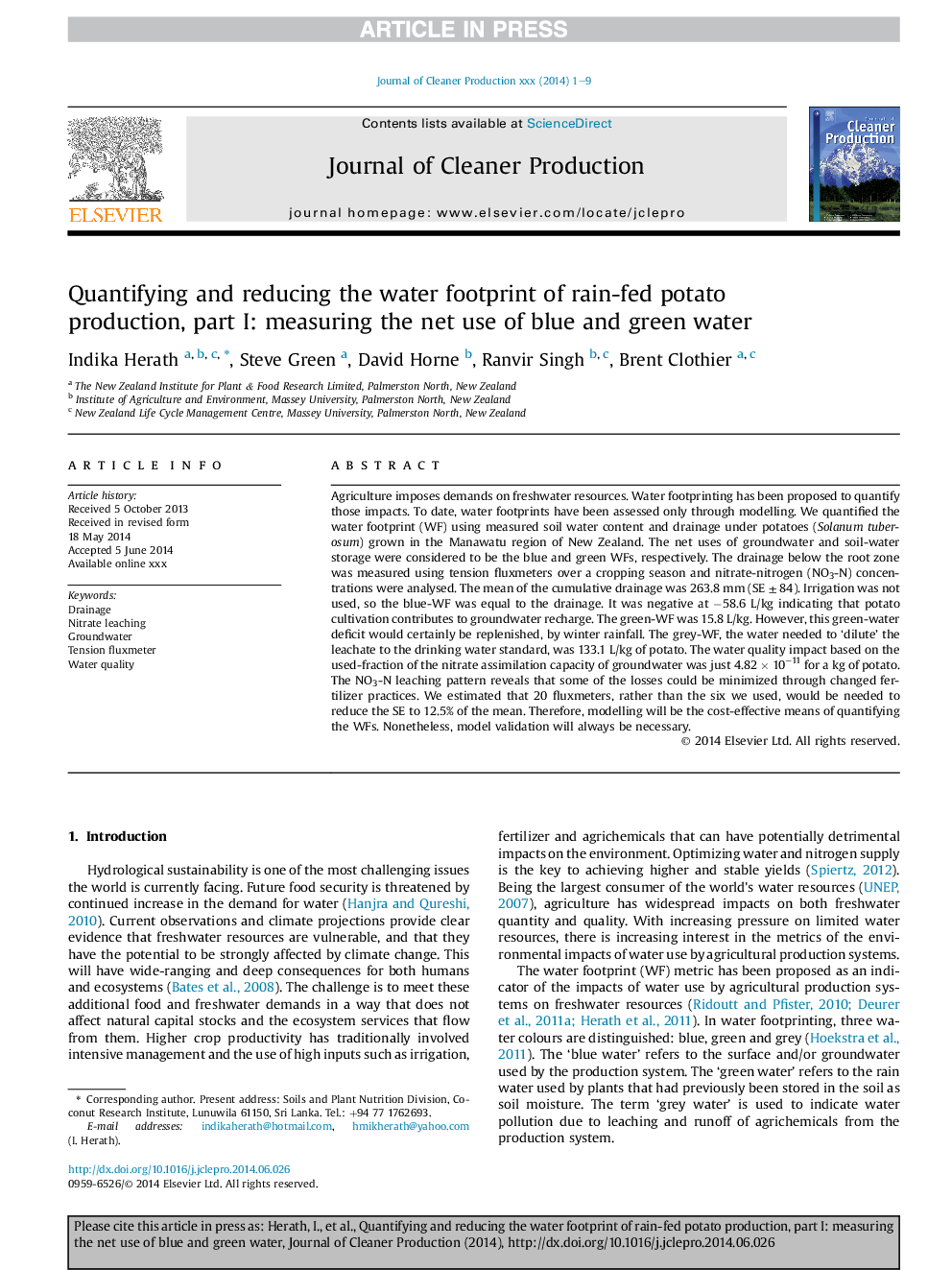| Article ID | Journal | Published Year | Pages | File Type |
|---|---|---|---|---|
| 8105773 | Journal of Cleaner Production | 2014 | 9 Pages |
Abstract
Agriculture imposes demands on freshwater resources. Water footprinting has been proposed to quantify those impacts. To date, water footprints have been assessed only through modelling. We quantified the water footprint (WF) using measured soil water content and drainage under potatoes (Solanum tuberosum) grown in the Manawatu region of New Zealand. The net uses of groundwater and soil-water storage were considered to be the blue and green WFs, respectively. The drainage below the root zone was measured using tension fluxmeters over a cropping season and nitrate-nitrogen (NO3-N) concentrations were analysed. The mean of the cumulative drainage was 263.8 mm (SE ± 84). Irrigation was not used, so the blue-WF was equal to the drainage. It was negative at â58.6 L/kg indicating that potato cultivation contributes to groundwater recharge. The green-WF was 15.8 L/kg. However, this green-water deficit would certainly be replenished, by winter rainfall. The grey-WF, the water needed to 'dilute' the leachate to the drinking water standard, was 133.1 L/kg of potato. The water quality impact based on the used-fraction of the nitrate assimilation capacity of groundwater was just 4.82 Ã 10â11 for a kg of potato. The NO3-N leaching pattern reveals that some of the losses could be minimized through changed fertilizer practices. We estimated that 20 fluxmeters, rather than the six we used, would be needed to reduce the SE to 12.5% of the mean. Therefore, modelling will be the cost-effective means of quantifying the WFs. Nonetheless, model validation will always be necessary.
Related Topics
Physical Sciences and Engineering
Energy
Renewable Energy, Sustainability and the Environment
Authors
Indika Herath, Steve Green, David Horne, Ranvir Singh, Brent Clothier,
